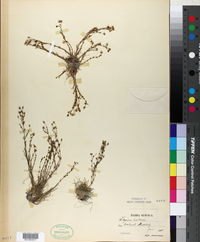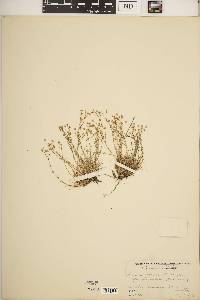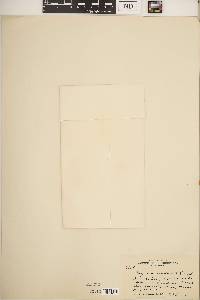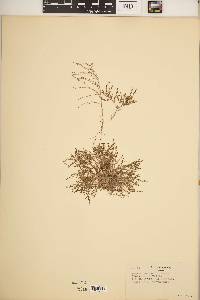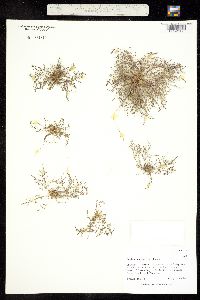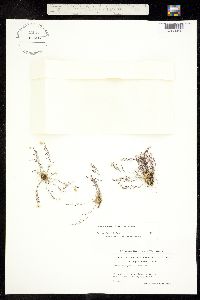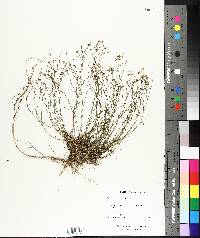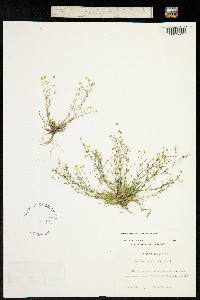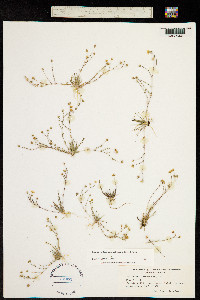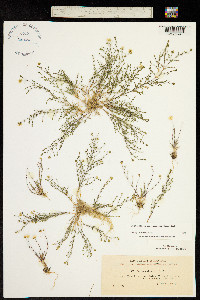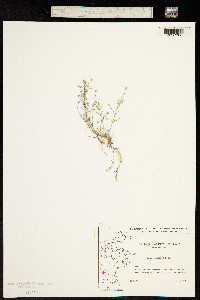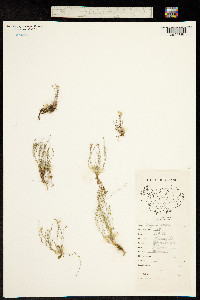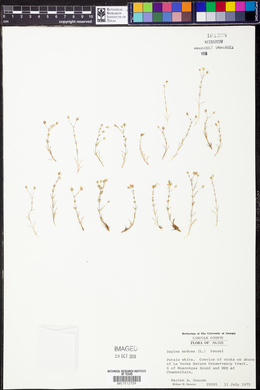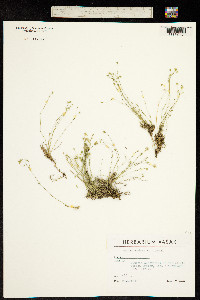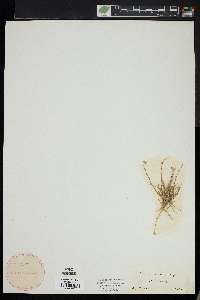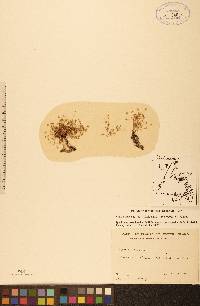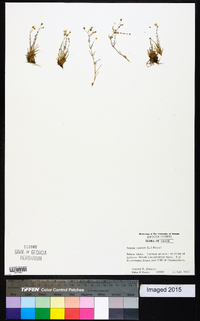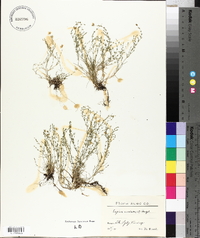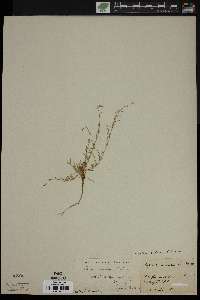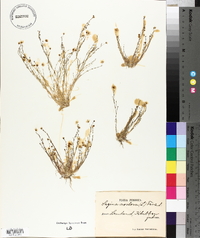Sagina nodosa
|
|
|
|
Family: Caryophyllaceae
Knotted Pearlwort
|
Plants perennial, tufted, pubescent or glabrous. Stems ascending to loosely spreading or prostrate, simple or with few to many lateral branches bearing only tiny, succulent, subulate leaves, not filiform. Leaves: axillary fascicles of subulate, fleshy leaves among distal cauline leaves, giving knotted appearance; basal ascending, forming tuft, not in rosettes, blade linear, ca. 15-30 mm, herbaceous, apex apiculate to mucronate, glabrous or glandular; cauline conspicuously connate basally, cuplike, proximal with blade linear to subulate, apex apiculate to mucronate, glabrous or glandular-pubescent, axillary fascicles of leaves absent; distal with blade subulate, 1-1.5 mm, fleshy, apex mucronate, glabrous. Pedicels filiform, base glabrous or glandular-pubescent. Flowers terminal and axillary, 5-merous or 4- and 5-merous; calyx base glabrous or glandular-pubescent; sepals elliptic, 2-3 mm, hyaline margins rarely purplish, apex frequently purplish, obtuse to rounded, remaining appressed after capsule dehiscence; petals elliptic to orbiculate, 3-4.5 mm, ca. 2 times sepal length; stamens 8 or 10. Capsules 3-4 mm, longer than sepals, dehiscing to base. Seeds dark brown, ovoid to reniform, laterally compressed, 0.5 mm, smooth or distinctly pebbled, abaxial groove present or absent.Subspecies 2 (2 in the flora): North America, Europe. Obviously perennial, decumbent to erect, 5-15 cm, with conspicuous tufts of basal lvs; lvs linear-subulate, 5-20 cm, triquetrous, the tip mucronate, boat-shaped, the upper cauline lvs reduced; short sterile shoots replacing some or all fls; fls terminating the slender branches, or on slender pedicels 4-12 mm in a branching infl; sep 5 (or 4 on some fls), broadly ovate or oblong, 2 mm, erect-appressed at maturity and about equaling the 5-valved fr; pet nearly twice as long as the sep; stamens 10; seeds 0.5 mm, plump, obliquely subreniform or nearly globose; minutely tessellate-tuberculate in lines or ridges, scarcely grooved. Polyploid series based on x=11. Rocky or sandy soil, moist shores, or beaches; circumboreal, s. in Amer. to Mass., Lake Superior (incl. Keweenaw Pt.), and Alta. Summer. The widespread native Amer. phase, glabrous throughout, or with only the pedicels and calyx-bases glandular-hairy, is var. borealis (Crow) Cronquist. The European var. nodosa, with the stems, pedicels, calyx-bases, and often the lf-margins glandular-hairy, is intr. along the coast from Nf. and Que. to Mass. Gleason, Henry A. & Cronquist, Arthur J. 1991. Manual of vascular plants of northeastern United States and adjacent Canada. lxxv + 910 pp. ©The New York Botanical Garden. All rights reserved. Used by permission. |


